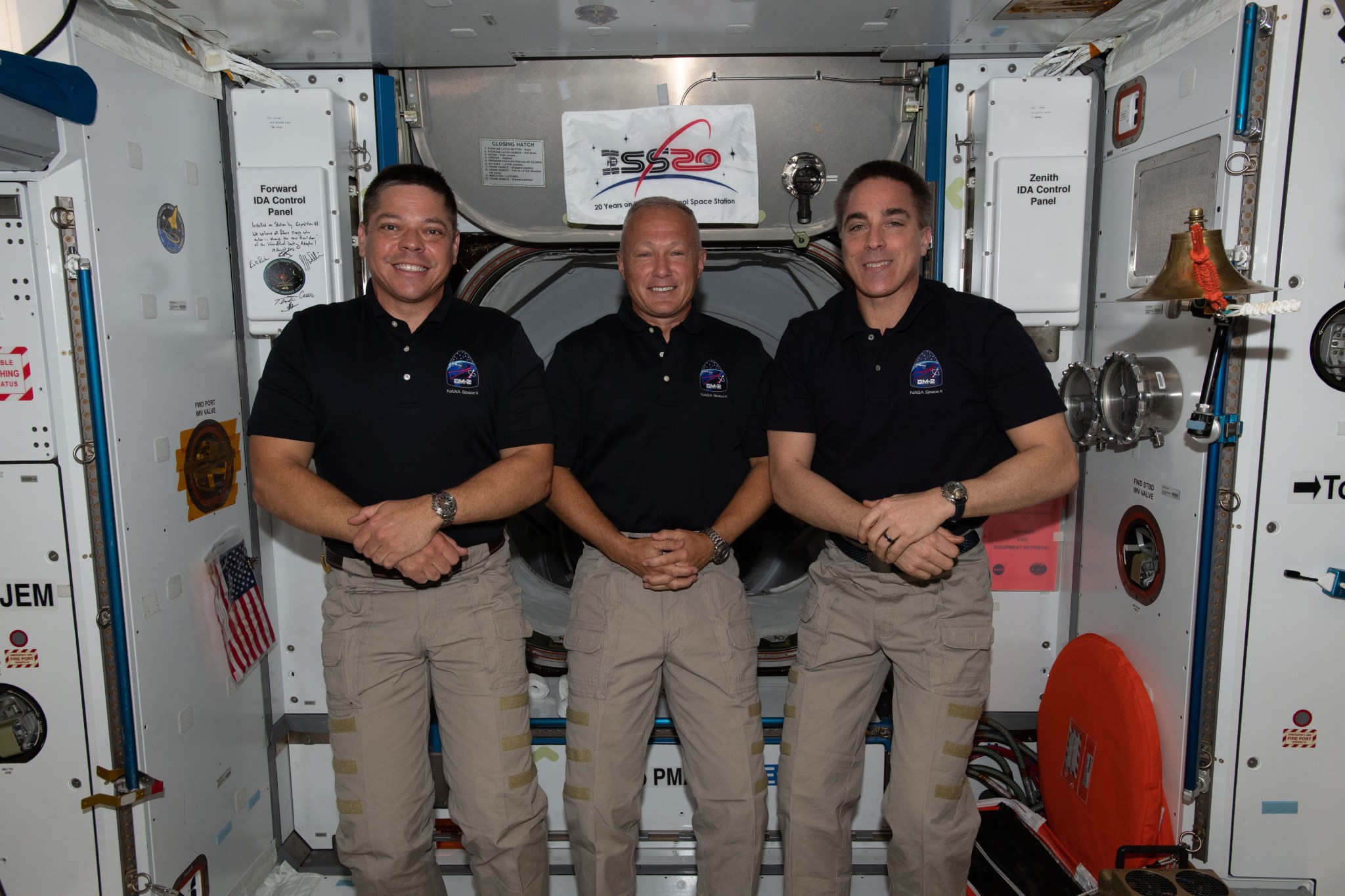Students from across the nation will have an opportunity this week to ask questions of NASA astronauts aboard the International Space Station. The Earth-to-space call will air live at 1:10 p.m. EDT Friday, June 19, on NASA Television and the agency’s website.
NASA astronauts Robert Behnken, Christopher Cassidy and Douglas Hurley will answer questions recorded by K-12 students from the Challenger Center’s national network of learning centers. Challenger Center provides more than 250,000 students annually with experiential STEM education programs. Challenger Center President and CEO Lance Bush will give opening remarks via a pre-recorded video. The student question-and-answer session will be the first of its kind with astronauts who arrived to the station on a commercially owned and operated spacecraft.
Cassidy launched to the space station April 9 and currently serves as the commander of Expedition 63. On May 30, Behnken and Hurley became the first NASA astronauts to launch to the station aboard a commercial spacecraft and rocket, lifting off from NASA’s Kennedy Space Center in Florida aboard SpaceX’s Crew Dragon capsule atop the company’s Falcon 9 rocket as part of NASA’s SpaceX Demo-2 mission. Behnken and Hurley joined the Expedition 63 crew after their Dragon spacecraft, named Endeavour, arrived to the station May 31.
Linking students directly to astronauts aboard the space station provides unique, authentic experiences designed to enhance student learning, performance and interest in science, technology, engineering and mathematics. Astronauts living in space on the orbiting laboratory communicate with NASA’s Mission Control Center in Houston 24 hours a day through the Space Network’s Tracking and Data Relay Satellites (TDRS).
For nearly 20 years, astronauts have been continuously living and working on the space station, testing technologies, performing science and developing the skills needed to explore farther from Earth. Through NASA’s Artemis program, the agency will send astronauts to the Moon by 2024, with eventual human exploration of Mars. Inspiring the next generation of explorers – the Artemis Generation – ensures America will continue to lead in space exploration and discovery.
Follow America’s Moon to Mars exploration at:
Follow NASA astronauts on social media at:
See videos and lesson plans highlighting research on the International Space Station at:
-end-
Sean Potter
Headquarters, Washington
202-358-1536
sean.potter@nasa.gov
Sandra Jones
Johnson Space Center, Houston
281-483-8670
sandra.p.jones@nasa.gov

























